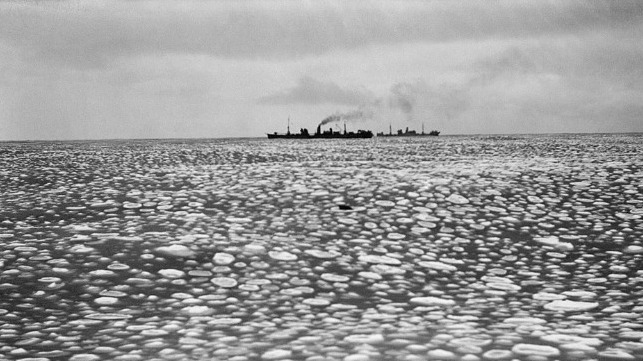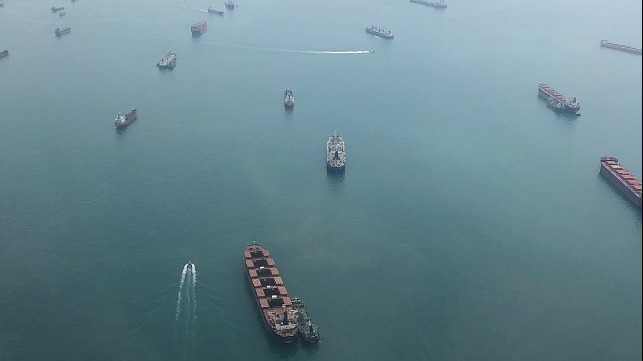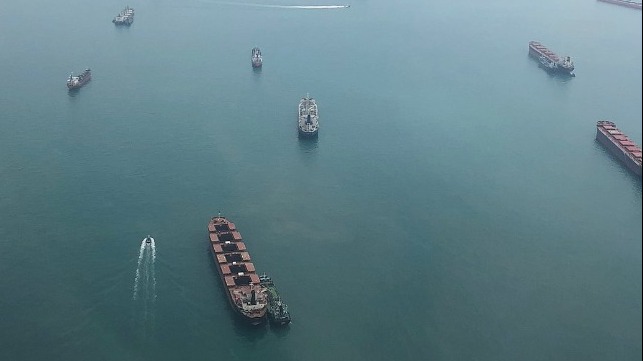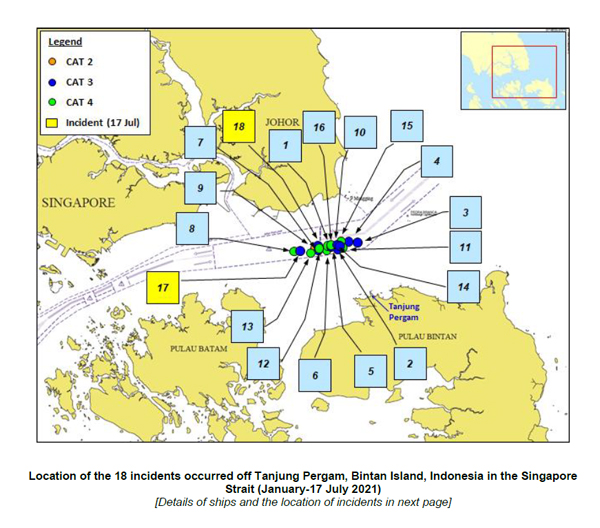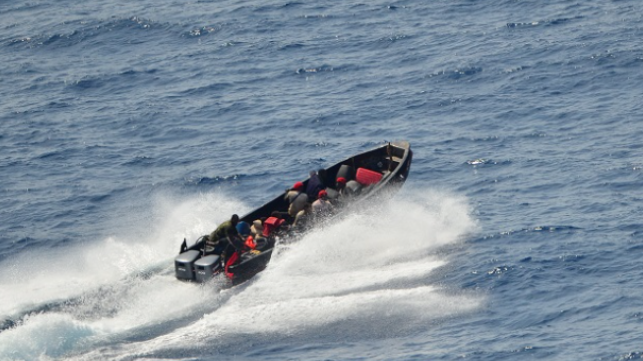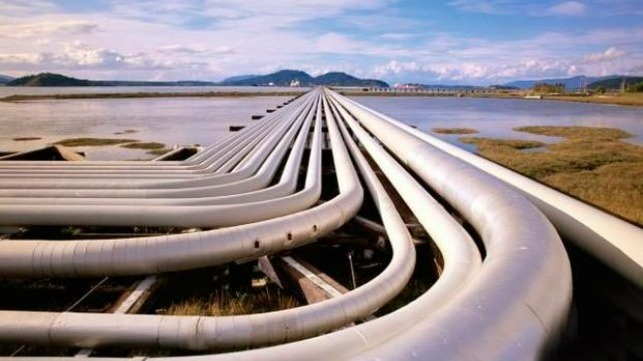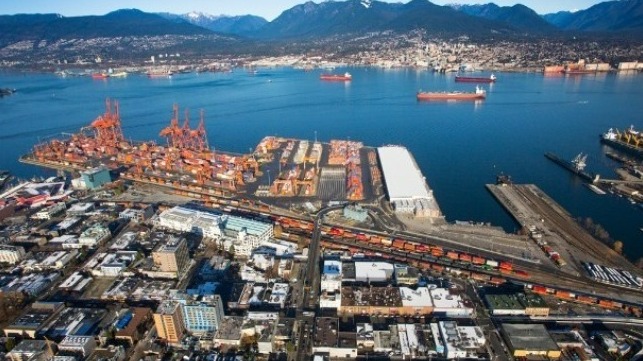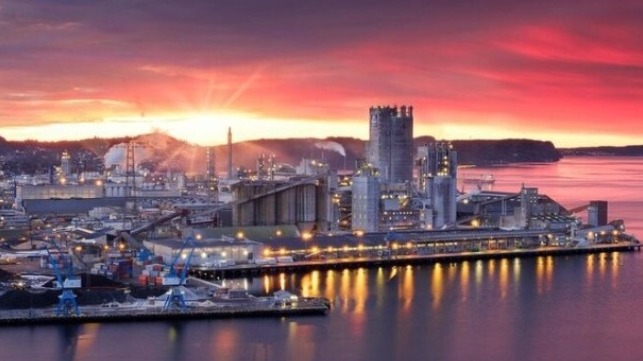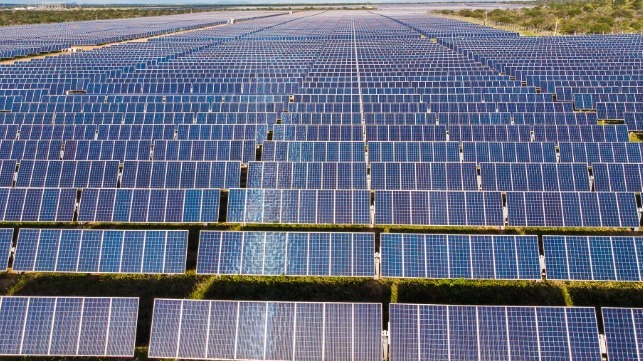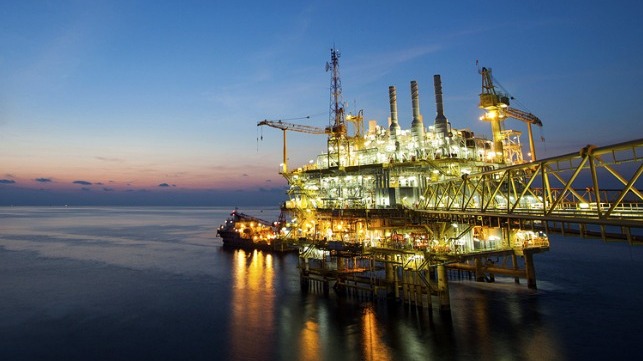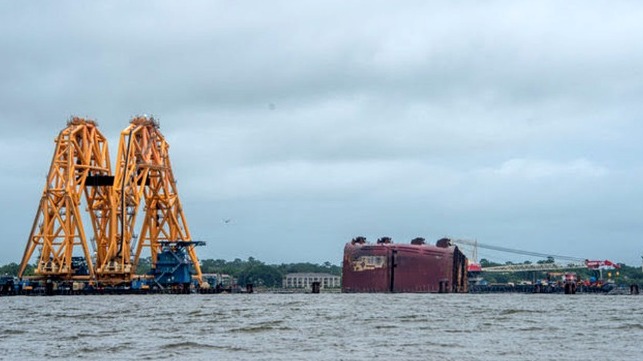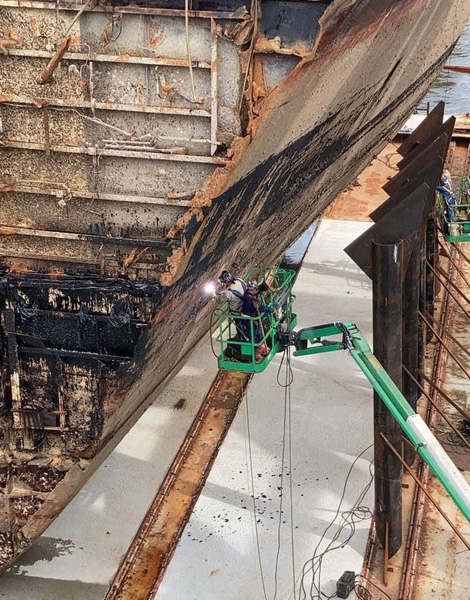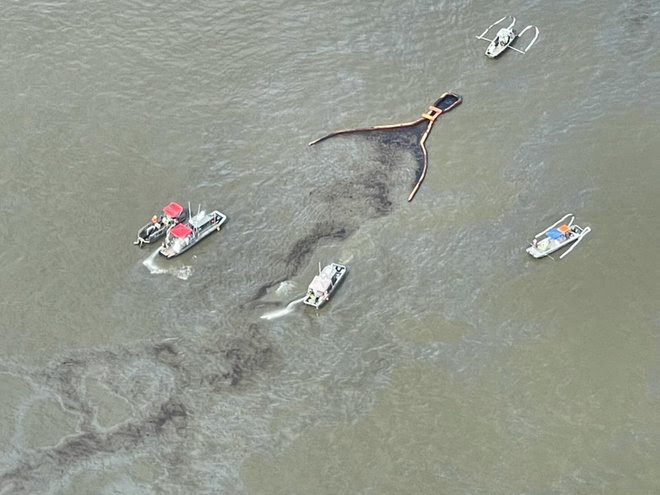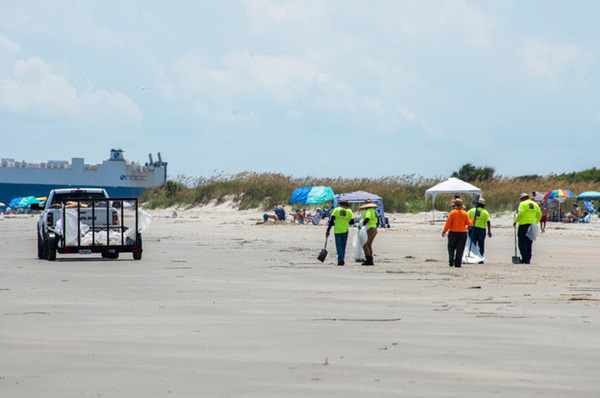'Those of us who had time to flee could only carry our children on our backs'

AUG 12, 2021
THE ASSOCIATED PRESS
A student writes in her notebook as she crouches against a wall on the muddied floor of a shack serving as a schoolhouse which was inundated by heavy rains the night before, in the makeshift settlement Nuevo Queja, Guatemala, Tuesday, July 6, 2021. UNICEF donated a new school to the community, but it has been closed for five months because no one could find the key to open it. (AP Photo/Rodrigo Abd)
Alberto Arce and Rodrigo Abd
Associated Press
NUEVO QUEJA, Guatemala — The day before he left for the United States was a busy one for Victor Cal. He went from relative to relative, collecting money to buy food during the journey north.
His mother was disconsolate. "I begged him not to go, that we could live here," she said, again and again, "but the decision had already been made".
He and his parents shared a small lunch -- a couple of chiles with sesame seeds -- in silence. His mother's gloom weighed upon him; he announced he had to find somewhere to charge his phone. "to receive calls so the coyote can tell me where and when we will finally meet."
He set off on a bumpy, dirt road, looking to hitch a ride to any place with electricity. A motorbike pulled over and drove him to the nearest outlet, miles away.
___
This story is part of a series, After the Deluge, produced with support from the Pulitzer Center on Crisis Reporting.
___
At age 26, Cal felt he had no choice but to leave. The makeshift town where he lived, born of disaster, offered only hunger and death. It seemed the U.S. was the only way out.
Eleven men from his town have gone north in 2021. American authorities say they have stopped more than 150,000 Guatemalans at the border this year, four times the number in 2020.
Many were like Victor Cal, famished and impoverished. He had served in the army, mustering out as a corporal. An indigenous Mayan who speaks Pocomchí, he failed to find work in Guatemala City. When the pandemic hit, he joined thousands who fled the capital to return to their agricultural hometowns in the mountains.
His father's land in Quejá, with its coffee, cardamon, corn and beans, sounded like a safe place. At least there will be food, he thought.
He was wrong.
In his worst nightmare, he could not imagine that a hurricane's rains could bring a mountain down and destroy it all -- house, land, town. He and his parents were left destitute by a fierce hurricane Eta, displaced and dependent on relief from international organizations in a desperately shabby settlement called Nuevo Quejá.
Now, he was hours away from leaving it behind. His phone charged, he returned home after sunset. A group of friends awaited him, but he was in no mood for goodbyes.
He packed quickly. Not too many things fit in a small yellow backpack: a shirt, a sweater, jeans and a pair of extra shoes. He lost pretty much everything else when the landslide buried his house.
___
It had been raining for 25 days. The people of Quejá had been cooped up in their homes for 10 days; access roads had been cut off by flooding.
Without electricity, all the telephones were dead. Nobody told the villagers that the rain that fell over the previous 24 hours had been five times the average monthly amount; no one told them they were at risk, and they should leave.
It was lunchtime last Nov. 5 when the first trees fell and the hillside began to melt. The townspeople left their food on the fire and ran.
"Those of us who had time to flee could only carry our children on our backs" says one of the survivors, Esma Cal, 28, an energetic, articulate woman who would assume a role as a community leader in the aftermath. (Many of the people of Quejá share the same last name, Cal, though it is not always clear how they might be related.)
Fifty-eight people disappeared in seconds. Most of the bodies will never be recovered. Forty homes were buried under tons of mud and dozens of others were left inaccessible.
Crossing torrents of water on ropes, the survivors walked to the nearest town. Residents shared with them their remaining food and put them up in schools and at the market. Due to the isolation, no trucks could arrive with supplies. When helicopters finally arrived, "some of us had been without food for almost two days," said Esma Cal.
Quejá was never an affluent place. But there had been hard-earned progress over the decades, and it was wiped out in minutes.
Erwin Cal, 39, explained that Quejá was founded a hundred years ago, when a group of families got access to a coffee plantation. "My grandfather was a slave. They had to harvest without pay before they were allowed to build their shacks and use some plots of land for their own fields."
There were corn and beans to eat. Then, coffee and cardamom for the market.
In time, they started earning some extra money so they could afford to buy the land.
In the '80s, some men started venturing out of their region and joined the Guatemalan army. At the turn of the century, riding the wave of violence that has plagued the country, they hired on as private guards.
Shacks turned into colorful cement houses with tiles, big windows, refrigerators. "I had a laptop, a sound system and cable TV," said Erwin Cal. All gone.
___
By January, Esma Cal, Erwin Cal, childhood friend Gregorio Ti and others organized a local development council. By February, they had founded a temporary settlement on a third of their agricultural land, close to their buried homes. Perhaps it was not safe from another landslide, but it was accessible.
Thus was born Nuevo Quejá, home to about 1,000 survivors.
"We know how to work," said Ti, 36. He lost his pregnant wife, his 2- and 6-year-old sons and his mother in the mudslide; his surviving daughters, 11 and 14 years old, cling to his side.
The toil is constant, and back breaking. There are no animals to share the burden -- all day long, men, women and children cut and transport wood and clear land with their machetes.
The shacks are constructed with zinc sheets donated by a priest and wooden planks made from pine trees the villagers cut down. Some have big stones on the floor. Holes in the roofs allow rainwater to pour inside; holes between the wall planks are patched with rags, including U.S. flags that turn up among donations of second-hand clothing.
Esma Cal's 37-year-old uncle, Germán Cal -- who returned to Quejá after 20 years in Guatemala City to breed chickens, only to lose all his savings in the mudslide -- is trying to bring electricity to Nuevo Quejá.
It's an almost impossible task -- because officially, the town does not exist.
The government of Guatemala has never been much help to these people. And after the mudslide, it declared the new settlement uninhabitable. If officially, Nuevo Quejá does not exist, it is not eligible for electric poles or road repairs or improved water supply.
"Apart from declaring the place uninhabitable," said Esma Cal, "the government of Guatemala has been absent. Period."
The townspeople have received some help from non-governmental organizations that drew funding from the U.S. Agency for International Development -- some of it useful, some of it less so.
One gave them wheelbarrows, picks and shovels and brought two psychologists to play with the kids, reminding them how to clean their teeth. A second visited to ensure that donations of water and sanitation kits were used correctly. A third spent two days in mid-July on a family needs assessment.
Mirrors donated by USAID hang inside every ramshackle house. The purpose: to elevate self-esteem.
UNICEF donated a new school to the community, but it has been closed for five months because no one could find the key to open it. It turns out that UNICEF gave the key to a teacher who resigned and left with it. A second copy was given to a community member who denied having it.
So instead, school was held in the shack next door, in chairs donated by the European Union. But like every other shack, it leaks, and the floor is often flooded and muddy. The furniture rots.
The school serves 250 children. Of the 12 teachers who worked there before the storms, four remain to teach despite a lack of a permit from the education ministry. Their materials are in Spanish; the students speak only Pomachi, said a teacher who spoke on condition of anonymity, for fear of consequences.
"None of them will go to high school. They already lost years. School failure is total," the teacher said.
___
César Chiquin, 39, is the head nurse in charge of the area. At least once a month, he visits Nuevo Quejá; mothers bring their children and wait on a patio as the nurse lays out his scale and tape measure.
Children cried in fear when they were placed on the scales. The mothers were silent, looking at Chiquin as if he was doing magic.
The results are bad. "Malnutrition has doubled. One in three are stunted," he said.
He does not have many options. "The only thing I can do is to give them some vitamins and advice they are not ready to follow. Even if they want, most of them cannot do it because they lack the resources."
Before the hurricane, the children were healthier. "Today, it is rare for a child to have the correct weight and height. Virtually all are at risk. Their families are not in a suitable place to harvest. They have lost sustainability."
This is the central plight of the people of Nuevo Quejá. Struggle as they might, they can't raise enough food to sustain themselves. Part of the problem is timing. Having lost last year's crops to the hurricanes, "We arrived in Nuevo Quejá too late for planting properly," Esma Cal says.
They also have just a third as much land as they did before the storms. And a lot of the soil has been degraded -- torrential rains wash away the topsoil, black and fertile, and leave behind orange clay.
"We harvested two times a year, now we have only one much smaller harvest, a very small portion of our needs. We are starting again below zero." Esma Cal says.
There are so many obstacles: Seeds and fertilizer are twice as expensive as before, roads are dangerous and easily collapse when it rains. But the lack of good land trumps them all.
The local council has done the calculations. They need about 75 acres more. But they have no money to buy them.
The government has a land trust. Someday they could be awarded the land they need but, according to Guatemalan law, it does not have to be in the same region -- and they cannot even contemplate such a move. Most do not speak Spanish, and a move would obliterate their culture.
"Our community is under collapse and we need a permanent solution. This place is not fit to live in and for the moment we have no way out," said a frustrated Esma Cal. "Our real problem is that we have no land and we are dependent.
"We, as a farming community, need land."
___
The people of Nuevo Quejá are well acquainted with death. They escaped a disaster in which 58 of their neighbors and loved ones died almost instantaneously, and they know it could happen again.
Still, they need wood for their stoves, so they are again deforesting the mountainside, setting the stage for more mudslides as the autumn and winter rainy season approaches.
"But for the moment we have no choice," Gregorio Ti said.
They have designated Julio Cal, 46, to monitor rain and the mountain. There is an evacuation plan: On a pine tree forest over a small hill, they have built a bigger shack where hundreds of people could stay. But few believe this is Nuevo Quejá's salvation.
"We know we can't be here," Julio Cal said. "At any moment that mountain could come crashing down and we all die. We know that. The government has to relocate us on permanent land."
In the meantime, people are dying in the squalor of this settlement, one by one.
In July, 17-year-old Flor Maribel Cal lay in bed with a tumor on her right leg the size of a soccer ball. She was in intense pain, vomiting, malnourished. Months earlier, when the community raised money to send her to the hospital, doctors said amputation was her only hope.
Her mother refused. Her husband and two other children had died in the mudslide, and she is silent and in despair. She does not have the strength to take care of a daughter who will not be able to fend for herself, so she declined treatment. The girl died, on July 22.
Death is one of only two ways out of Nuevo Quejá. The other is emigration to the United States.
Ask any man, and he would say he wants to go. Stay, and you might earn $4 for a full day's work of clearing land, harvesting coffee or cutting wood, Victor Cal said -- hardly enough to support a family. He had heard that you could earn $80 a day in the U.S.
And moving to Guatemala City wasn't an option. There were no jobs in the pandemic, and the deck is stacked against Mayans like Victor Cal who lack Spanish skills.
Most of them say the only thing that prevents them from emigrating is that they cannot afford it.
Víctor Cal contacted a distant cousin who has been in Miami for years. He agreed to advance the $13,000 to buy a coyote package that offers two attempts to enter the U.S.
Optimistic, Cal was convinced he will be able to earn enough to repay his cousin.
It was four in the morning when Victor Cal took a scrap of paper and wrote his number and the number of the coyote who would take him to the Arizona desert.
He left it on the table, one of the few pieces of furniture in the dirt-floored shack. "My objective," he repeated, as if to convince himself, "is to be able to send money so my parents have a real house again and some land."
He added: "If I had a choice, I wouldn't go. I will be back as soon as possible"
He said goodbye without looking back at Nuevo Quejá.
